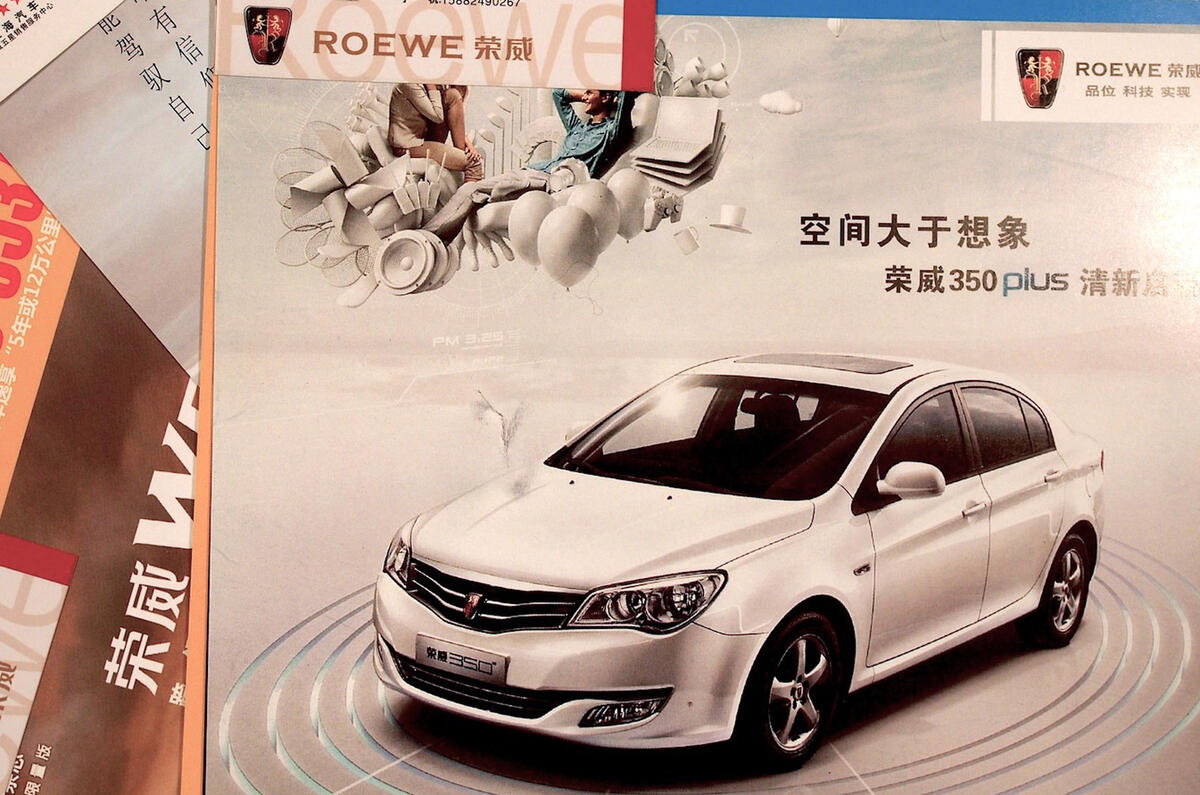I’ve just come back from three days in Shanghai, perhaps the most international of China’s megacities.
Inevitably, you end up spending a few hours on buses, staring out of the window at the astonishing infrastructure of the place. From the massive motorway network, to the choice of either a tube train or super-fast maglev train when leaving Shanghai’s hugely impressive airport.
But, like I’m sure you would, I spent most of my time on the bus just watching the passing traffic. It doesn’t take long to realise that, in this city at least, virtually all of the passenger cars on the roads are from foreign manufacturers, even if they are locally built.
Count the Citroen C5s, Peugeot 307 saloons, Ford Focuses, Minis, the Buick saloon version of the Vauxhall Astra, Jaguar XJs, Range Rovers as well as the expected fleets of BMWs, Mercs and Audis.
The only domestic cars that seemed to have any real presence on Shanghai’s streets were Roewe 550 saloons and a smattering of the new MG3 supermini. Of course, the Roewe 550 has its roots in the Rover 75 and the MG3 was mostly engineered and designed in the UK.
This, no doubt, is something that the more affluent Shanghai buyers know this well. An ‘international’ brand car – to use the local shorthand - is the first choice of Chinese buyers, most of whom are first-time buyers in their 20s.
Even more so than Europeans, young Chinese are permanently attached to the web and their smart phones, so they have a global view of consumer durables. Buyers in the bigger cities have no time for domestic Chinese brands, which ruined their reputations from the outset by making cars that were poorly built, often very unreliable and saddled with questionable safety standards.
Megacity residents aspire to European premium brand clothes and luxury lifestyle items and are well versed in understanding deep-seated quality. The upshot is the Western car brands, and nameplates from Japan and Korea, have now taken the bulk of the new car market.




Join the debate
Add your comment
Good God, the Chinese are
Good God, the Chinese are still buying Rovers?
It's the poo that won't flush.
I'm thinking of buying a
I'm thinking of buying a Nokia Lumia smart phone. Nokia, an international brand, that is now in the doldrums. You can buy Chinese trains etc, some made with the help of Siemens etc. But then most Chinese banks will have massive investments in all these companies around the world.
Are there parallels here .....
... with the UK - except that China has jumped over the stage where they built great cars and have just moved to our own situation where almost all mass-produced cars in the UK are built by foreign-owned companies. Maybe the Chinese will use their own undoubted talents to build niche models like so many of our own smaller manufacturers; perhaps the generation that grows up with decent (albeit "foreign" cars) will eventually set up their own car-companies that will be truly Chinese, after all their potential market is so huge that there must be room for many more car makers.
Maybe so, but........!
ordinary bloke@
Trouble is, the Chinese have this penchant for copying other car makers,and it's not helping there cause,yes, if they can develope niche cars of their own design,but,they mustn't look like copies,shows a lack of confidence when they do.
Maybe so, but ......... !
Reply to Peter Cavalini @ "... penchant for copying other car makers ....."
I quite agree that the Chinese have to make their own way and not just produce bad copies of other people's products, from what I gather they seem to be learning quickly with the help of mainly European colleagues (its working in Korea with Hyundai / Kia for instance) and the modern generations are quick to take up new technologies and are keen on getting well educated. My guess is that as the older generation lose their grip on the Party and power, the new young guns will encourage more and more genuine entrepreneurs who don't rely on simply copying the West. As the article mentions, the young Chinese are now perfectly at ease with modern technology and are not content with being fobbed off with shoddy copies of western products, that trend can only grow as the younger generation takes control of the economic reins. They have to beat corruption and so on but they seem to be making a start with the recent trials and have proved they are not afraid of bringing down powerful figures if need be.